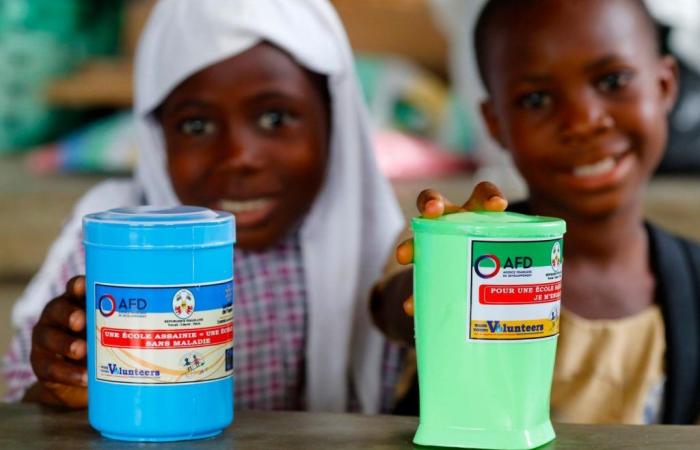
AToday, in Sudan, Nigeria, Niger and other places around the world where populations are plagued by hunger and malnutrition, caregivers have no choice but to send children home malnourished due to lack of means to care for them. However, effective treatments have existed for two decades: available in the form of sachets which can be consumed at home and which cure a child in a month and a half, these treatments invented by a French doctor and engineer are mass produced in around twenty countries. factories mainly located in Africa and Asia.
But in 2024, a growing number of clinics located in areas of nutritional and food crises will not have them, due to a lack of sustainable funding to help purchase and deliver these treatments. On October 16, World Food Day, a person, most likely a child, dies of hunger every four seconds.
The risk of famine is increasing at the rate of humanitarian tragedies: in 2023, 282 million people – including 14 million children at risk of death from a severe form of acute malnutrition – were faced with a drastic lack of food. Faced with conflicts, climate shocks and growing inequalities, nutritional crises risk prolonging and multiplying.
Since 2017 the stagnation of financing
As a result of climate change, it is estimated that by 2050, 40 million additional children could suffer from stunted growth due to malnutrition. Whatever the causes of this malnutrition, its first victims, from Gaza to Sudan via Nigeria or Afghanistan, remain women and children.
Read also | Article reserved for our subscribers World hunger remains high, “an admission of terrible failure”
Add to your selections
Since 2017, funding for food security and nutrition has stagnated while over the same period, the number of people threatened by hunger has only increased – such a situation is all the more revolting as solutions to malnutrition acute exist and are known.
Read also | Article reserved for our subscribers Sub-Saharan Africa caught in the “trap” of too low growth
Add to your selections
The year 2022 was a notable exception in this slump: when the war in Ukraine intensified, fear of a disruption of food systems on a global scale resulted in a temporary increase in funding dedicated to the sectors nutrition and food security initiatives from international donors.
Strengthen the mobilization of 2022, a special year
For example, UNICEF received over this period more than $750 million for the purchase and provision of nutritional treatments, which made it possible to increase by more than a third (35%). the number of severely malnourished children taken care of compared to previous years, i.e. more than 7 million children. This mobilization made it possible to temporarily reduce infant mortality in Nigeria and Niger: in other words it saved lives.
You have 46.84% of this article left to read. The rest is reserved for subscribers.





